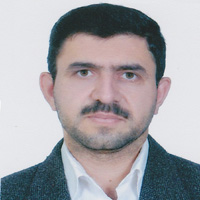Clustering of narratives of the “Sang-e Saboor” folktale
Mutation in DNA, migration, natural selection, type of non-random matting (such as consanguineous marriages) and genetic drift (in small size populations) are factors caused alterations of allelic frequencies in populations (Saadat and Amirshahi 2011, 1-12). The above-mentioned factors are evolutionary forces. Folktales, like living organisms, have evolutionary pathways. Folktales experience sudden changes (mutation), and moving from a population to another population (migration). Some parts of folktales change according to some environmental factors (such as economic, political and cultural), which is very similar to natural selection. Some parts of different folktales join with each other, which is similar to non-random matting. Finally, some large levels of changes randomly occur in folktales in small communities (similar to genetic drift). In biology, there are several methods for clustering organisms (including animal and plants). Two of these methods are 'phenetics' and “phylogenetics” clustering. It should be noted that phenetics methods are based on similarities (or differences) without attention to ancestress. In the present study we tried to clustering of 38 narratives of a very famous Iranian folktale (Sang-e Saboor). Sang-e Saboor is a tale type 894 according to the Aarne-Thompson–Uther tale type index.
In order to verify the validity of this hypothesis, in the present study, phenetics clustering analysis of 37 narratives of Sang-e Saboor in Iranian populations (Anjavi-Shirazi 2015, 317-390; Qatali 2010, 229-332; Ardalani 2003; 233-236; Elwell-Sutton 2007, 368-374; Behrangi and Dehqani 2002, 128-132; Pak 2012, 65-67; Sarfi 2008, 21-24; Fagiri 2003, 57-60; Arji 2006, 125-128; Takahara and Vakilian 2002, 97-100; Moaed-Mohseni 2002, 567-568) and a narrative from Afghanistan (Herat) was carried out (Rahmani 1998, 142-146). In the narratives used, a total of 40 features were extracted, some with more than two levels. After converting them to bi-state (zero and one) properties, a total of 53 bi-state characteristics were obtained (Table 1). The clustering was carried out using 'Euclidean distance' and analysis of 'within-group linkage'. Geographical distances between each two locations of narratives were obtain by 'Google Map'. The migration rate between two populations is a function of their geographical distance. Correlation between 'Euclidean distance' and 'geographical distance' was evaluated by Pearson correlation coefficient. Data was entered into the Statistical Package for Social Sciences software (SPSS Inc., Chicago, IL, USA) (version 11.5). A P-value less than 0.05 was considered statistical significant. All P values were two-tailed.
Table 2 should the distance matrix of each narrative with the other 37 narratives. Figure 1 shows the correlation between 'Euclidean distance' and 'geographical distance'. The correlation between geographical and Euclidean distances is statistical significant (r=+0.197, df=701, P<0.001). It should be noted that determination coefficient (r2) to be equal to 0.0388, which it means that about 3.8% of variations in 'Euclidean distances' might be interpreted by geographical distances. Given the weak correlation, the geographical distance cannot explain the differences between narratives. The study narratives were classified in two distinct clusters (Fig. 2). The first and second clusters contains 28 and 10 narratives, respectively. The narratives of the main clusters have major differences, especially in the early stages of the story. In the first cluster, it's predicted that the hero of the story will face a lot of problems in the future, while in 9 out of ten narratives of the second cluster, there is no prediction for the future of the hero of the story. On the other hand, there are similarities between some of narratives of the second cluster and another Iranian folktale (Dokhtar-e narag o torang) (Pak 2012, 173-181; Anjavi-Shirazi 2014, 19-68). It is obvious that the mentioned similarities might be a reflection of their common ancestors. Some investigators used phylogenetic clustering in order to find the evolutionary relationship between different folktales (Ross et al., 2013; O’Brien et al., 2016). Further phylogenetic studies are needed to find the possible common ancestors of Sang-e Saboor and Dokhtar-e narag o torang folktales.
- حق عضویت دریافتی صرف حمایت از نشریات عضو و نگهداری، تکمیل و توسعه مگیران میشود.
- پرداخت حق اشتراک و دانلود مقالات اجازه بازنشر آن در سایر رسانههای چاپی و دیجیتال را به کاربر نمیدهد.



